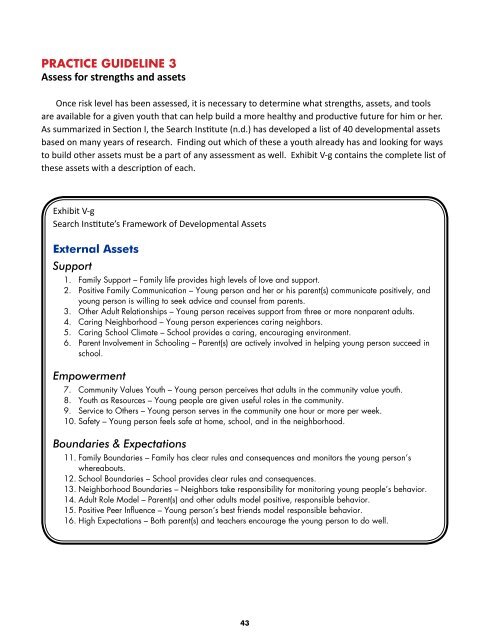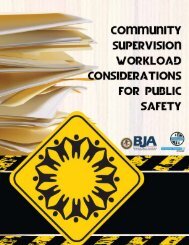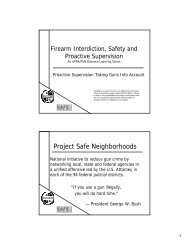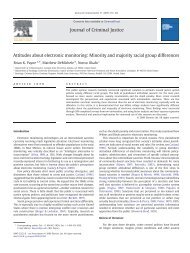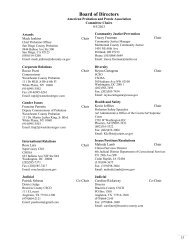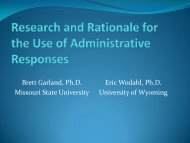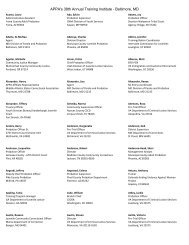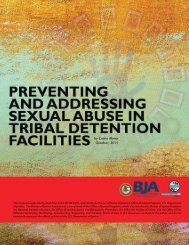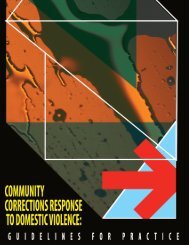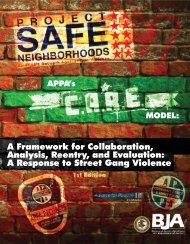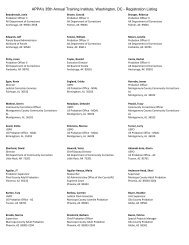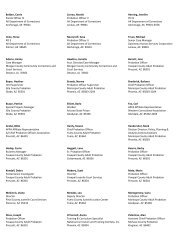Intervention Principles and Practice Guidelines for - Underage ...
Intervention Principles and Practice Guidelines for - Underage ...
Intervention Principles and Practice Guidelines for - Underage ...
Create successful ePaper yourself
Turn your PDF publications into a flip-book with our unique Google optimized e-Paper software.
<strong>Practice</strong> Guideline 3<br />
Assess <strong>for</strong> strengths <strong>and</strong> assets<br />
Once risk level has been assessed, it is necessary to determine what strengths, assets, <strong>and</strong> tools<br />
are available <strong>for</strong> a given youth that can help build a more healthy <strong>and</strong> productive future <strong>for</strong> him or her.<br />
As summarized in Section I, the Search Institute (n.d.) has developed a list of 40 developmental assets<br />
based on many years of research. Finding out which of these a youth already has <strong>and</strong> looking <strong>for</strong> ways<br />
to build other assets must be a part of any assessment as well. Exhibit V-g contains the complete list of<br />
these assets with a description of each.<br />
Exhibit V-g<br />
Search Institute’s Framework of Developmental Assets<br />
External Assets<br />
Support<br />
1.<br />
2.<br />
3.<br />
4.<br />
5.<br />
6.<br />
Family Support – Family life provides high levels of love <strong>and</strong> support.<br />
Positive Family Communication – Young person <strong>and</strong> her or his parent(s) communicate positively, <strong>and</strong><br />
young person is willing to seek advice <strong>and</strong> counsel from parents.<br />
Other Adult Relationships – Young person receives support from three or more nonparent adults.<br />
Caring Neighborhood – Young person experiences caring neighbors.<br />
Caring School Climate – School provides a caring, encouraging environment.<br />
Parent Involvement in Schooling – Parent(s) are actively involved in helping young person succeed in<br />
school.<br />
Empowerment<br />
7. Community Values Youth – Young person perceives that adults in the community value youth.<br />
8. Youth as Resources – Young people are given useful roles in the community.<br />
9. Service to Others – Young person serves in the community one hour or more per week.<br />
10. Safety – Young person feels safe at home, school, <strong>and</strong> in the neighborhood.<br />
Boundaries & Expectations<br />
11. Family Boundaries – Family has clear rules <strong>and</strong> consequences <strong>and</strong> monitors the young person’s<br />
whereabouts.<br />
12. School Boundaries – School provides clear rules <strong>and</strong> consequences.<br />
13. Neighborhood Boundaries – Neighbors take responsibility <strong>for</strong> monitoring young people’s behavior.<br />
14. Adult Role Model – Parent(s) <strong>and</strong> other adults model positive, responsible behavior.<br />
15. Positive Peer Influence – Young person’s best friends model responsible behavior.<br />
16. High Expectations – Both parent(s) <strong>and</strong> teachers encourage the young person to do well.<br />
43


